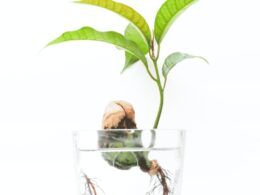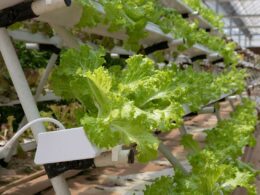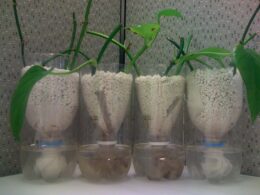Do you want to keep your aquatic environment healthy and safe for your fish and plants? One essential factor to consider is oxygenation.
Oxygen is crucial for aquatic life to survive, and without it, they will suffer and eventually die. But what if you don’t want to use a pump to oxygenate your water? Don’t worry, there are other ways to do it naturally.
In this article, we’ll explore how you can oxygenate water without using a pump. We’ll discuss utilizing aquatic plants, adding waterfalls and fountains, and using aeration stones and diffusers.
By the end of this article, you’ll have a better understanding of how to keep your aquatic environment healthy and safe without relying on a pump. So, let’s dive in and learn more about natural ways to oxygenate water.
Importance of Oxygenation in Aquatic Environments
Properly oxygenated aquatic environments are essential for the health and vitality of all the living creatures that call them home. Without enough oxygen, aquatic life can suffer and even die. This is because oxygen is necessary for many of the processes that keep aquatic organisms alive, such as respiration, metabolism, and growth.
The benefits of oxygenation for aquatic life are clear. High levels of oxygen in the water can support a diverse range of species, from tiny plankton to large fish. It also helps maintain water quality, which is important for the overall health of the ecosystem. On the other hand, low oxygen levels can have harmful effects, such as suffocating fish and other organisms, leading to a decline in biodiversity and water quality.
It is important to understand the importance of oxygenation in aquatic environments and how to maintain healthy levels of oxygen without relying on a pump. Some natural ways to oxygenate water include adding aquatic plants, creating a waterfall or fountain, or simply agitating the surface of the water with a paddle or stick.
By taking these steps, you can help create a healthy aquatic ecosystem for all the creatures that call it home.
Utilizing Aquatic Plants for Natural Oxygenation
You can enhance the oxygen levels in your water by using aquatic plants, which are able to produce oxygen through photosynthesis. This natural process is known as biofiltration, where the plants absorb carbon dioxide and release oxygen into the water.
The benefits of biofiltration are numerous, as it not only increases oxygen levels but also helps to remove harmful toxins and pollutants from the water. There are many types of aquatic plants that can be used for natural oxygenation, such as Anacharis, Hornwort, and Water Hyacinth.
Anacharis is a popular choice because it’s easy to grow and can quickly oxygenate large amounts of water. Hornwort is another plant that’s great for oxygenation, as it grows quickly and can provide shelter for fish and other aquatic creatures. Water Hyacinth is another popular choice, as it not only oxygenates the water but also helps to remove excess nutrients and pollutants.
Incorporating aquatic plants into your aquatic environment can be a simple and effective way to enhance oxygen levels and ensure the health and safety of your aquatic creatures. By utilizing the benefits of biofiltration and choosing the right types of aquatic plants, you can create a thriving and healthy aquatic environment that’s both beautiful and functional.
Adding Waterfalls and Fountains
If you want to create a visually stunning and dynamic aquatic environment, adding waterfalls and fountains can provide not only aesthetic appeal but also enhance oxygen circulation and improve the overall health of your aquatic creatures.
Designing features like waterfalls and fountains can create a natural flow of water that helps oxygenate your aquatic environment. Waterfalls and fountains help to increase the surface area of water exposed to air, which in turn increases the amount of oxygen that is absorbed into the water.
Maintenance requirements for waterfalls and fountains are relatively low compared to other oxygenation methods. Waterfalls and fountains can quickly and efficiently oxygenate water without using electricity or a pump. The only maintenance required is keeping the water feature clean and free of debris to allow for proper water flow and oxygenation.
Waterfalls and fountains not only enhance aesthetic appeal and oxygen circulation but also provide a calming and soothing atmosphere. The sound of flowing water can have a positive impact on your well-being and create a relaxing environment for your aquatic creatures.
So, if you want to improve the health of your aquatic environment while creating a visually appealing and calming atmosphere, consider adding a waterfall or fountain to your aquatic setup.
Using Aeration Stones and Diffusers
Adding aeration stones and diffusers is a great way to improve the health and well-being of your aquatic creatures, while creating a peaceful and tranquil atmosphere in your aquatic setup.
Aeration stones work by releasing tiny bubbles of air into the water, which increases oxygen levels and helps to break up any debris that may have settled on the bottom of your tank. Diffusers work in a similar way, but instead of releasing bubbles, they release a fine mist of air into the water.
When using aeration stones and diffusers, it’s important to consider the placement of the stones. You want to make sure that they are placed in a way that allows for maximum circulation and coverage of the water. This will ensure that the oxygen is distributed evenly throughout the tank and that all areas receive the benefits of the aeration.
Additionally, it’s important to regularly clean the stones and diffusers to prevent any buildup of debris or bacteria.
Using aeration stones and diffusers is a simple and effective way to oxygenate your water without the need for a pump. By properly placing and cleaning the stones, you can ensure that your aquatic creatures have access to the oxygen they need to thrive, while also creating a calming and serene environment for yourself to enjoy.
Other Factors to Consider
As you explore other factors to consider in maintaining a healthy aquatic environment, you’ll discover the importance of monitoring water temperature, pH levels, and the appropriate amount of food to ensure the well-being of your aquatic creatures.
Temperature regulation is crucial because it affects the metabolic rate of your aquatic creatures. If the water temperature is too low, the metabolic rate slows down, and if it’s too high, it speeds up, causing stress on your aquatic creatures. Therefore, it’s essential to keep the water temperature within the ideal range for your aquatic creatures.
Bacterial growth is another factor to consider when maintaining a healthy aquatic environment. Bacteria are naturally present in water, and they play a crucial role in breaking down organic matter. However, excessive bacterial growth can cause harm to your aquatic creatures. High levels of bacteria can cause diseases, oxygen depletion, and foul odors. Therefore, it’s essential to maintain the appropriate level of bacteria in your aquatic environment through regular water testing and changing.
Lastly, the appropriate amount of food is essential to maintain a healthy aquatic environment. Overfeeding can cause uneaten food to decay, leading to the growth of harmful bacteria and algae. Uneaten food can also cause water pollution, leading to poor water quality and ultimately harming your aquatic creatures. Therefore, it’s essential to feed your aquatic creatures the right amount of food, depending on their size and species, and to remove any uneaten food promptly.
By considering these factors, you can maintain a healthy aquatic environment and ensure the well-being of your aquatic creatures.
Frequently Asked Questions
Can I oxygenate water without any equipment or tools?
Looking for DIY methods to oxygenate water? It’s possible to do so without any equipment or tools!
Oxygenated water has many benefits, such as promoting healthy fish and plant growth in aquariums, and increasing the oxygen levels in drinking water.
One way to oxygenate water is to simply pour it back and forth between two containers, allowing the water to mix with the air.
Another option is to add plants or an air stone to the water, which will help to oxygenate it naturally.
So, try these easy and effective methods to enjoy the benefits of oxygenated water today!
How long does it take to oxygenate water naturally through aquatic plants?
Natural water oxygenation through aquatic plants can take anywhere from several days to several weeks, depending on the factors involved. There are numerous benefits to natural water oxygenation, including the creation of a healthy environment for aquatic life and the reduction of harmful substances in the water.
The speed of oxygenation can be affected by factors such as water temperature, the number and size of plants, and the presence of other organisms in the water. While it may take longer than using a pump or other equipment, natural water oxygenation is a safe and effective way to improve the health of your aquatic environment.
What are the best types of aquatic plants for oxygenation?
If you’re looking to oxygenate your water naturally, one of the best solutions is to incorporate aquatic plants into your setup.
There are several types of plants that are known for their oxygenating properties, such as hornwort, elodea, anacharis, waterweed, and water sprite. These are considered the top 5 oxygenating plants because they produce oxygen during the day and absorb carbon dioxide at night.
To maximize their effectiveness, it’s best to combine different types of plants as they all have their unique benefits. Hornwort, for example, is excellent at absorbing nutrients, while waterweed is great at absorbing heavy metals.
By combining these plants, you can create the best plant combinations for oxygenation, ensuring that your aquatic ecosystem remains healthy and oxygen-rich.
Can adding too much oxygen harm aquatic life?
Adding oxygen to water can be beneficial for aquatic life, but it’s important to be mindful of the amount. Oxygenation techniques such as aeration, surface agitation, and adding oxygen through chemical means can increase the dissolved oxygen levels in the water, which is necessary for many aquatic species to survive.
However, too much oxygen can be harmful and even deadly for some organisms, especially those that are more sensitive to changes in their environment. For example, fish may experience stress and even death if the oxygen levels in the water are too high.
It’s important to monitor the effects of oxygenation on different aquatic species to ensure that the right balance is maintained for their health and well-being.
How do temperature and weather conditions affect water oxygenation?
If you’re an aquarium owner, you know that dissolved oxygen is essential for fish survival. But did you know that the weather and altitude can affect water oxygenation?
The amount of oxygen that can dissolve in water decreases as temperature increases, so warmer water can hold less dissolved oxygen than cooler water.
Climate conditions like rainfall and wind also play a role in water oxygenation. Rain can increase oxygen levels by adding oxygen from the air, while wind can mix the water and increase oxygenation.
Altitude can also impact oxygen levels in water, as lower atmospheric pressure at higher elevations means less oxygen can dissolve in water.
Understanding the effects of climate and altitude on water oxygenation is crucial for ensuring healthy fish.
Conclusion
Congratulations! You now know how to oxygenate water without a pump! By understanding the importance of oxygenation in aquatic environments, you can use various methods to keep your water healthy and your aquatic life thriving.
One natural method is to utilize aquatic plants to oxygenate your water. Adding waterfalls and fountains not only add visual appeal, but also provide aeration. And using aeration stones and diffusers can help oxygenate your water in a more controlled and efficient manner.
Remember, there are also other factors to consider such as temperature and pH levels. By implementing these methods and considering all factors, you can maintain a healthy aquatic environment without the need for a pump.
So, get out there and start oxygenating your water naturally!









